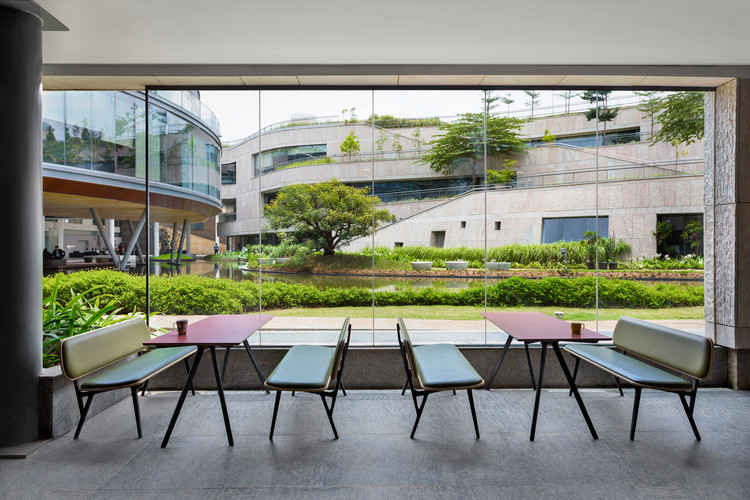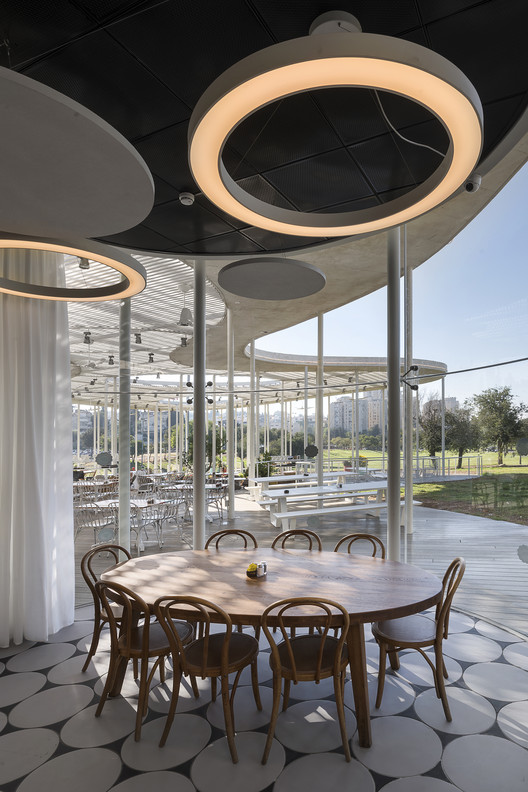RD House VASHO
2014-02-11 01:00
© Eduardo Abreu
Eduardo Abreu
.jpg)

架构师提供的文本描述。规划方面的挑战:设计一座能让18人舒适地适应500 mt2(包括露台)的房子。开阔的空间,本地建筑的特色。所有的卧室都有自己的浴室、书房和/或图书馆,客厅-餐厅-厨房都在一个空间里。这所房子将是夏天间歇使用的第二个家。
Text description provided by the architects. The programmatic challenge: design a house that allows 18 people to fit comfortably within 500mt2 (including terraces). Open spaces, characteristic of the local architecture. All of the bedrooms have their own bathroom, study and/or library and living room-dining room-kitchen all in one space. The house will be a second home to use intermittently in the summer.
© Eduardo Abreu
Eduardo Abreu
.jpg)

建筑师认识到,其中一个巨大的挑战将是难以进入和有限的水平表面的物业,其中大部分有一个45至70度的坡度。这就是为什么我们进行了一项非常精确的调查,以便能够从地基到屋顶花园工作。山体面的自然水平曲线不仅影响工作的结构加固,而且影响空间的规划布局。例如,在房子客厅的山丘自然表面的连续性中可以看出这一点。
The architect recognizes that one of the greates challenges will be the difficult access and limited horizontal surface of the property, most of it having a slope of 45 to 70 degrees. That is why an extremely precise survey was made to be able to work from the foundations to the roof gardens. The natural level curve of the face of the hill influenced not only the structural reinforcement of the job but also the programmatic distribution of spaces. This can be seen, for example, in the continuity of the natural surface of the hill in the living room of the house.
© Eduardo Abreu
Eduardo Abreu
.jpg)

掩埋房子被认为是一种视觉行为。将作品的整体体积隐藏到现有的自然地理中,以缓冲作品到达后对眼睛的影响,自觉于天堂般的环境,但总是试图使自然环境在用户面前从内部显现出来:“消失使之出现”。
Burying the house is proposed as a visual action. Hiding the overall volume of the work to the existing natural geography to cushion the impact of the volume to the eye upon arrival, being conscientious of the paradisaic surroundings, but always seeking to make the natural surroundings appear from the interior before the user: “Disappear to make appear”.
© Eduardo Abreu
Eduardo Abreu
.jpg)

“宜居庇护所”的大部分材料是从挖掘的财产中提取出来的岩石。它的有形混凝土墙是用松木制成的,它与优质的本土木材一起,提供了一种乡村环境,在不放弃“现代”外观的情况下,衬托出质感色彩与周围环境的反差。
A large percentage of what materials of the “Habitable Refuge” is rock extracted from the excavation of the property. Its visible concrete walls were molded in pine formers which, along with the high quality native wood, delivers a rustic environment which cushions the contrast of texture-color with its surroundings without abandoning the “modern” look.
© Eduardo Abreu
Eduardo Abreu
.jpg)

把房子埋在山上的行为不仅涉及到美学方面,也涉及到可持续方面。就直接来自太阳的热量而言,绿色屋顶允许更多的隔热。它的后表面与山中的岩石接触,形成了一种称为“热惯性”的冷却现象,这种现象由一个基本的物理作用组成;“体积小的物体的温度等于当这两个物体接触时体积较大的温度。”为了在不造成可能产生的建设性损害的情况下做到这一点,采用了高度工程的防水方法。换句话说,避难所不需要机械冷却系统。这本身就是一个争讼墙。
The act of burying the house in the hill not only touches the esthetic aspect but also the sustainable aspect. The green roof allows for more insulation as far as direct heat from the sun is concerned. Its rear face is in contact with the rock of the hill creating a cooling phenomenon known as "thermal inertia" that consists of a basic physical action; "The temperature of a body of lesser volume equals that of a greater volume when these two bodies are in contact.” To make this possible without the constructive damages that may arise, highly engineered waterproofing methods were used. In other word the refuge does not need a mechanical cooling system. It is a contention wall in itself.
© Eduardo Abreu
Eduardo Abreu
.jpg)

根据一般的理解,只要有良好的管理,就有能源效率;换句话说,消耗的负荷减少了,那就是我们在设计中加入了域名,目的是要与房子接触到一种生态的方法。Domology是一个智能系统,它基本上集成了一个结构化的Web,它允许控制照明场景、娱乐组件(声音、来自另一位置的按摩浴缸的温度调节)和安全(电磁阀、凸轮车、报警系统等)。从家里或家庭以外的任何地方,产生舒适和节能。
From the general understanding that where there is good administration there is energy efficiency; in other words the consumed load decreases, is that we have incorporated Domotics to the design, with the purpose to touch an ecological approach with the house. Domotic is an intelligent system that basically integrates a structured web which allows control of the lighting scene, entertainment components (sound, temperature regulation of the Jacuzzi from another location) and security (solenoid valves, camaras, alarm system, etc.) from anywhere within the home or out of the home, generating comfort and energy saving.
Floor Plan


.jpg)

.jpg)

.jpg)

.jpg)

.jpg)

.jpg)

.jpg)

.jpg)

.jpg)

.jpg)

.jpg)

.jpg)

.jpg)

.jpg)

.jpg)

.jpg)

.jpg)

.jpg)

.jpg)

.jpg)

.jpg)

.jpg)













Architects VASHO
Location Dominican Republic
Category Houses
Architect in Charge Alexi Moraga H.
Project Area 470 sqm
Project Year 2013
Photographs Eduardo Abreu
























